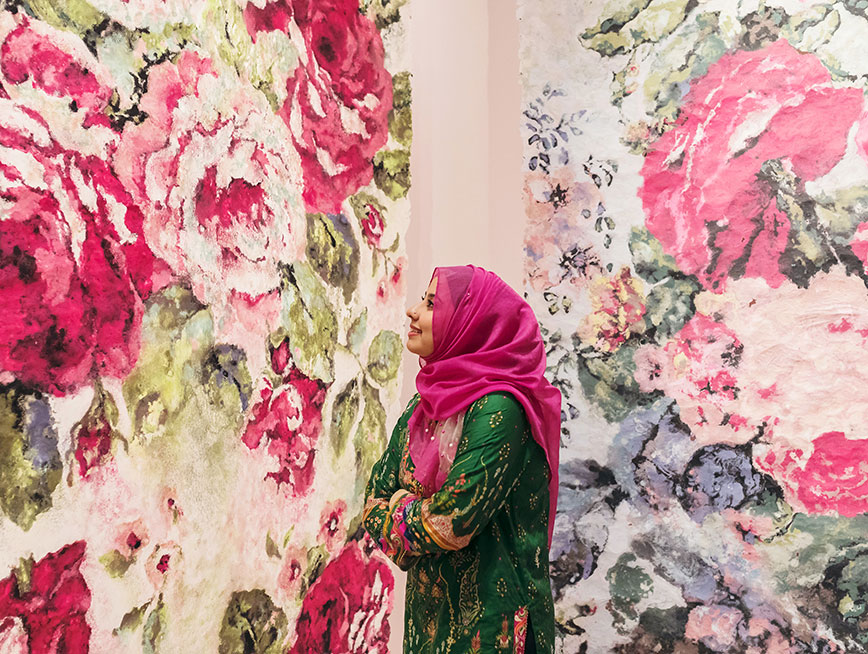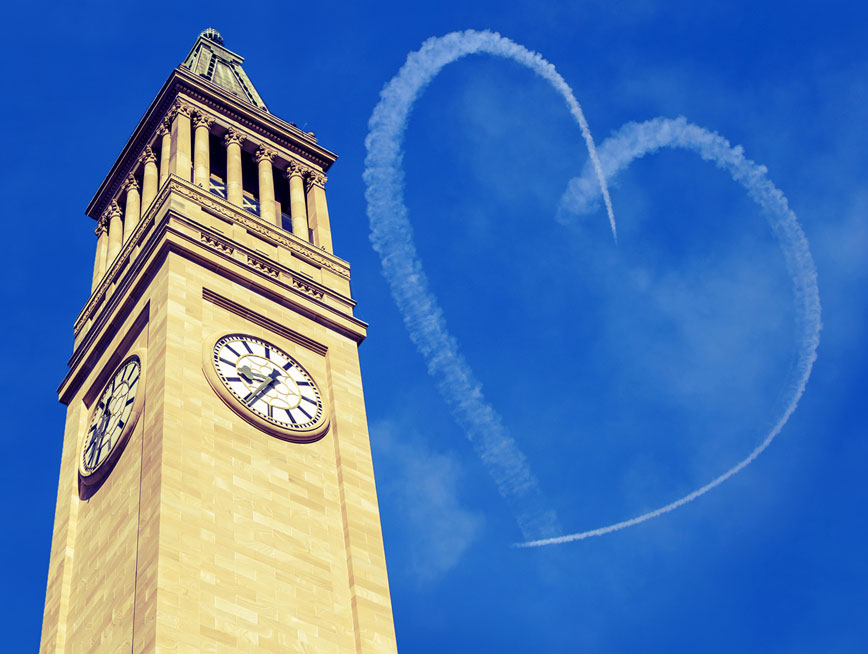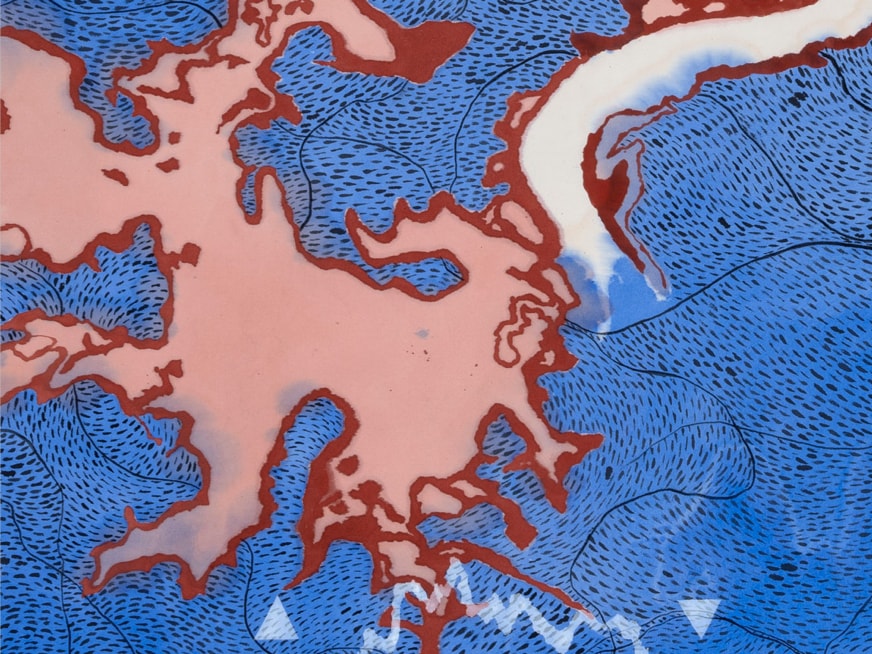In 2021, we reflect on 10 years since the 2011 floods devastated our city and acknowledge all who were affected. In this online exhibition, artist Holly Neilson (Paper Hands) responds to quotations from Brisbane’s community about the floods, encompassing a range of emotions, observations and reflections.
Brisbane’s position on a floodplain, cyclonic weather system, and changing climate mean the city’s residents are no strangers to floods. Prolonged heavy rainfall and a strong La Niña weather pattern in South-East Queensland from December 2010 – January 2011 prompted the state’s most significant flooding event in recent history, with the Brisbane River breaking its banks on 11 January 2011 and peaking at 4.46 metres on 13 January.
Major landmarks were damaged and, in some cases, washed away. In Brisbane, 94 suburbs were directly affected, but the emotional and psychological effects were felt across the nation. After the water subsided, much of Brisbane was covered in mud and silt. This gave rise to a huge collective clean-up effort made up of around 55,000 volunteers. Local residents came together to lend each other a hand during a distressing time in our city’s history.
…the second half of 2010 Australia experienced one of the strongest La Niña events on record… As a result Queensland experienced its wettest July to December… two intense thunderstorms formed off the coast adjacent to Maroochydore and Redcliffe respectively. At about 11am they converged to form a single intense storm… The mathematical probabilities of such a meteorological event were explored… it is enough to say it was unusual.
Michael Barnes, State Coroner, Inquest into the deaths caused by the South-East Queensland floods of January 2011, 2012.
Holly Neilson, Unusual 2020, black fine ink pens and watercolour.
Museum of Brisbane Collection.
Oh, river don’t you come up over me
Just don’t try, try to swallow us please
While the sun is shining only to deceive me
Hold my hand we’ll watch this water rise
Brisbane band The Strums, Oh River, 2011.
Holly Neilson, Oh, River 2020, black fine ink pens and watercolour.
Museum of Brisbane Collection.
We have this flood template, and it flares every 40, 50, 100 years and it’s the same character, the same animal that visits us each time. And yet…we continue to be surprised, as it’s not often this happens to a major city and especially when it’s your home town.
Matthew Condon, author, Facing Armageddon, QWeekend, 2011.
Holly Neilson, The Animal that Visits 2020, black fine ink pens and watercolour.
Museum of Brisbane Collection.
Long after the cameras and media have lost interest, the victims will still be cleaning up. Surface aspects will certainly be tidied. In 12 months it will seem to be surprisingly normal. But there will be people who still get strange feelings whenever it rains. And there will be people in Brisbane and Ipswich who can no longer take anything as stable. Floods may go down, but the things they leave behind take much longer.
Thomas Shapcott, poet and novelist, “Nowhere to hide from the mayhem when the river comes looking for you”, The Sydney Morning Herald, 2011.
Holly Neilson, Nowhere to Hide 2020, black fine ink pens and watercolour.
Museum of Brisbane Collection.
I lost my house and almost everything in it. It was devastating. All the things I’d worked hard for…gone in a flash. It took a year to rebuild my home and much, much longer to recover mentally from the shock. Five years later and I still can’t sleep when it rains and I get anxious when the local creek rises. However, I count myself one of the lucky ones. I had a support network of family, friends, neighbours, colleagues and even complete strangers, who rallied around…I realised that possessions, although necessary in our lives, don’t really matter – only people do.
Marjorie Cross, Brisbane resident, 2016.
Holly Neilson, Rebuild 2020, black fine ink pens and watercolour.
Museum of Brisbane Collection.
Moodagurra – the rainbow serpent – she’s the one that will bring the floods. She decides when the big rains come.
Shannon Ruska, Yuggera/Toorabul people, 2016.
Holly Neilson, Followed 2020, black fine ink pens and watercolour.
Museum of Brisbane Collection.
When you think about a “flood”, you only think about water, and you think that water should be able to go in and out of a house and just get stuff wet. You forget that river water contains an awful lot of silt. I realise now that’s why it is so brown! I knew things would be wet, but I did not anticipate the tonnes of mud that had been dropped on this suburb.
Cassie Woolley, Brisbane resident, “The day that both broke and warmed my heart – 15 January 2011″, 2011.
Holly Neilson, Covered 2020, black fine ink pens and watercolour.
Museum of Brisbane Collection.
I remember being eleven years old, just about to start my final year of primary school when the 2011 floods happened. I don’t think I fully understood what was happening but I remember Dad giving me some boxes and telling me to pack anything I didn’t want to lose. Being the bookworm that I was, I was so torn between which books to take and which to leave. We couldn’t take all of my younger brother’s things, so we stowed all the toys and teddies on a high shelf and hoped that they would remain high and dry. Murky river water was lapping at the back steps as we drove away, our car stuffed to bursting with our most precious belongings.
Rachel Hoey, Brisbane resident, 2020.
Holly Neilson, High and Dry 2020, black fine ink pens and watercolour.
Museum of Brisbane Collection.
…from that chaos something beautiful emerged: A city united, drawn together in solidarity to help out, clean up and rebuild. Out of the floodwaters rose the Mud Army. To this day, I’ve never seen anything like the incredible spirit that Brisbane showed as we all rolled up our collective sleeves to support each other after such a mind-blowing extreme weather event.
Jo Willans, Brisbane BreakFree Climate Action Group, “The water came from everywhere but the sky”, Greenpeace, 2019.
Holly Neilson, Mud Army 2020, black fine ink pens and watercolour.
Museum of Brisbane Collection.
Illustrations by Holly Neilson. Animation by Sai Karlen and Thirteen Digital.
About the artist
Holly Neilson is a Brisbane-based artist and founder of Paper Hands. Having grown up close to the sea, and close to rainforests, Holly’s love for nature and her relationship with the wild grew immensely. Holly’s work translates across various mediums, including: murals, portraiture, fine line drawings and watercolour. Her work has featured in exhibitions and media outlets nation-wide.
About the animation team
Sai Karlen is an art director and designer who works with Thirteen Digital. Sai creates unique and experimental visuals which combine design, storytelling and technology. For this online exhibition, he has animated Holly Neilson’s drawings, bringing the stories they tell to life.
*Animation not displaying properly? This page has been optimised to work with most web browsers. Please check your settings to ensure that your web browser supports animation.




